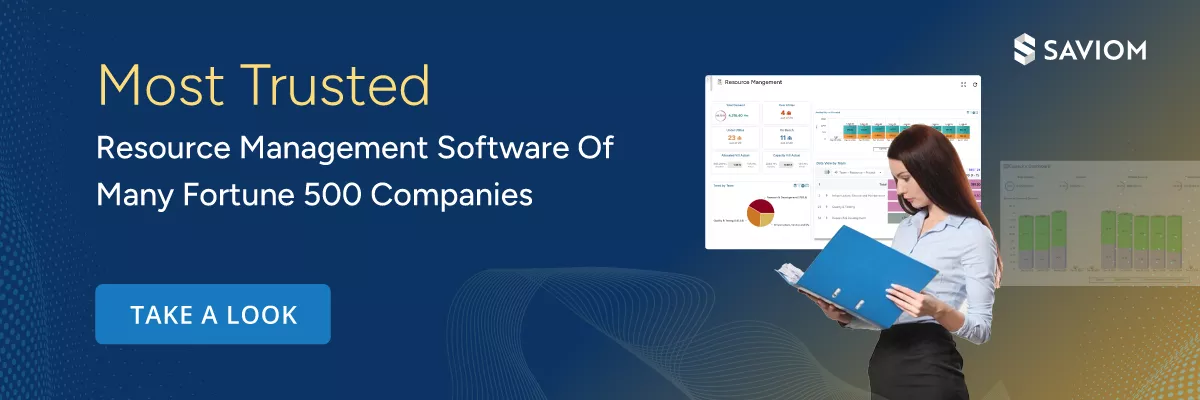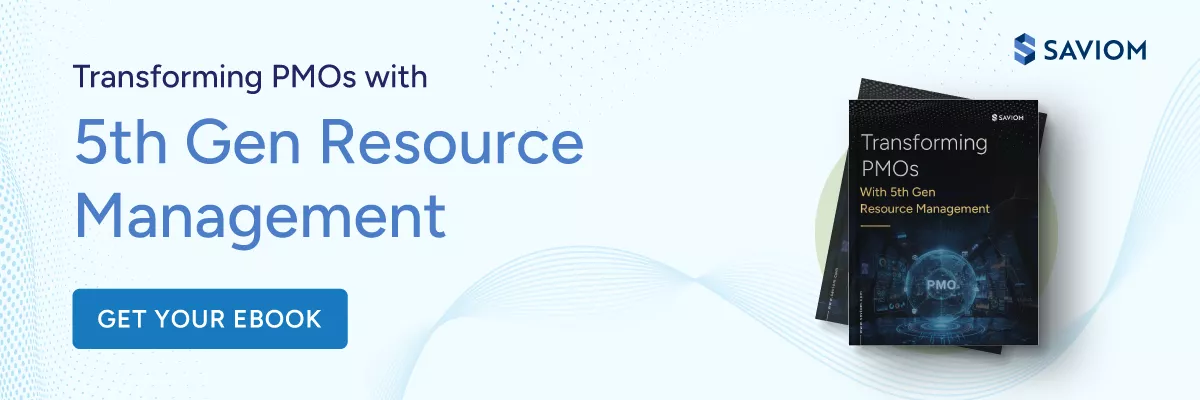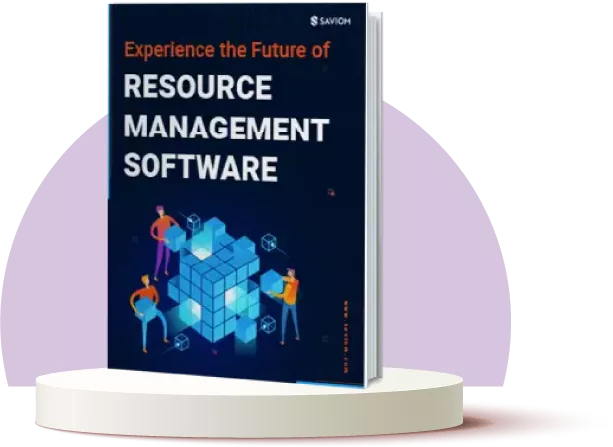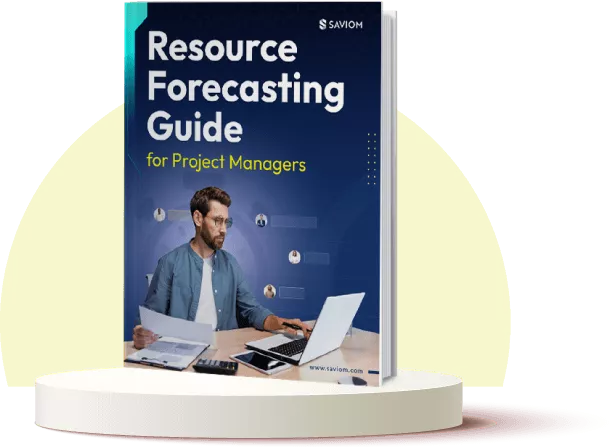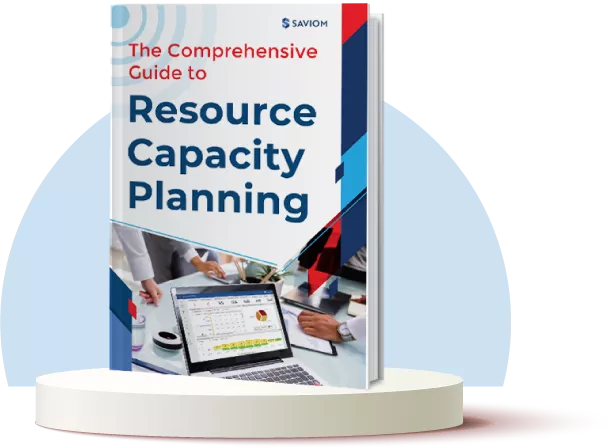The PMO is no longer a passive support function within an organization that focuses mainly on governance and control; it’s now the heartbeat of strategic execution. Its responsibilities have transcended task and project tracking to shape business outcomes, drive innovation, and unlock value across every layer of the business.
This is the era of the PMO as a value architect—bold, agile, multi-dimensional, and built to lead transformation.
The next-gen PMO is rewriting the rules and reshaping how organizations grow, adapt, and succeed. It is enhancing strategic value by aligning every initiative with long-term business goals. Moreover, it optimizes enterprise resources by ensuring the right people and tools are focused on the highest-impact work. Lastly, it boosts financial value by pre-emptively addressing risks, improving investment decisions, and reducing delivery waste.
As the modern PMOs are shedding their administrative routines and stepping into a more strategic role, they’re using data to see beyond project boundaries and align enterprise resources to deliver outcomes that truly matter. Besides, in this evolution, success isn’t measured by how efficiently projects are completed, but by how effectively they advance the business vision.
This article explores how today’s forward-thinking PMOs are breaking free from routine administration to become engines of strategy, agility, and value.
How Does Next-Gen PMO Drive Business Value?
A next-gen PMO delivers business value by aligning every project and resource directly with the organization’s strategic goals. Instead of focusing solely on compliance or delivery, it takes a portfolio-level view of performance. This ensures that investments in time, talent, and technology contribute to measurable business outcomes.
Let’s learn how it delivers tangible business impact across multiple dimensions.
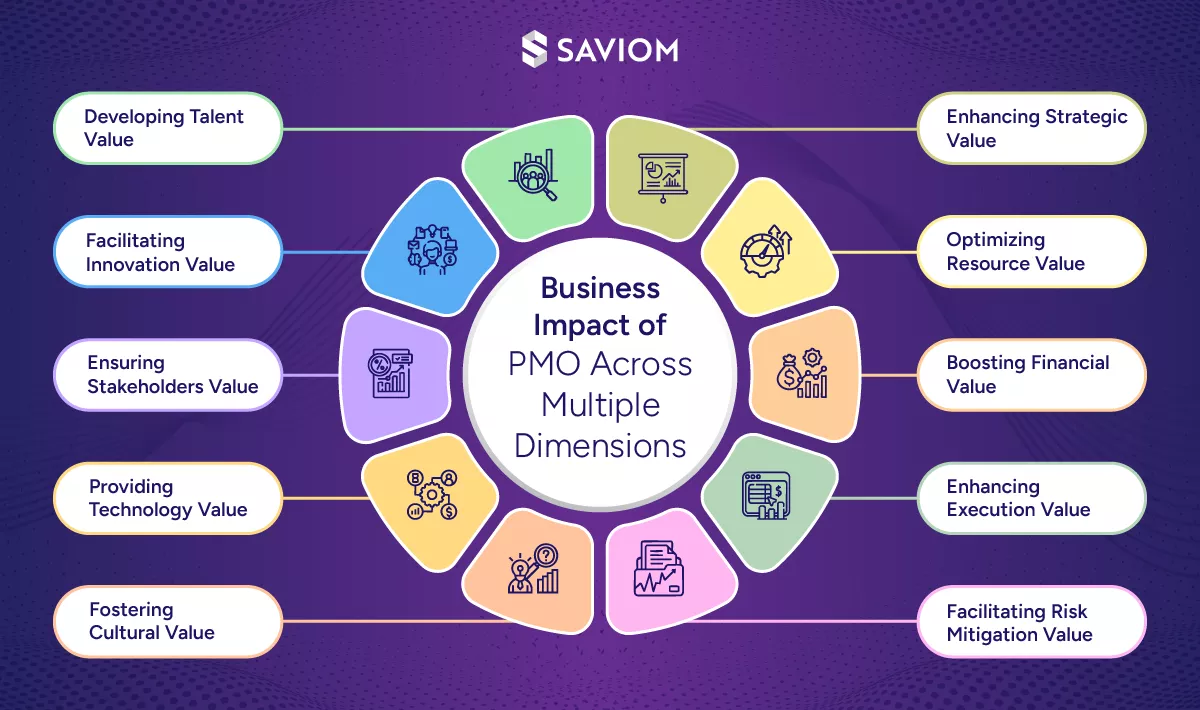
Enhancing Strategic Value
A modern PMO enhances strategic value by aligning all initiatives with long-term business goals and ensuring every effort contributes to the broader vision. Here is how:
Align Projects with Business Strategy
PMOs ensure all initiatives directly support organizational objectives. By linking projects to strategic goals, they prioritize efforts that create meaningful impact, avoid redundant work, and enhance the overall value delivered to the business.
Enhance Strategic Resource Utilization
Through proactive forecasting and allocation, forward-thinking PMOs ensure that the right skills, tools, and budgets are dedicated to high-priority initiatives. This optimizes strategic resource utilization, reduces waste, and ensures that every resource contributes to business-critical outcomes.
Portfolio Prioritization
PMOs analyze and rank projects based on strategic importance, potential ROI, and risk exposure. By focusing attention on the most impactful initiatives, they enable smarter investment decisions and ensure organizational efforts align with long-term business objectives.
Drive Value Realization
Delivering a project is only part of the journey; the PMO ensures its benefits are fully realized and sustained. By tracking outcomes against objectives, PMOs help convert project outputs into measurable, lasting business value.
Continue reading: 10 Key Benefits of a PMO That Improve Project Delivery
Enable Agility and Responsiveness
Modern PMOs provide the frameworks and tools needed to quickly adapt to changing market conditions or business priorities. This agility ensures projects remain relevant, teams stay aligned, and the organization can respond effectively to new opportunities or challenges.
Optimizing Resource Value
A next-gen PMO optimizes resource value by ensuring the right resources, i.e., people, tools, and finances, are aligned to the highest-impact work. It improves visibility and adaptability, helping businesses make better decisions regarding resource allocation and utilization. Here’s how:
Proactive Resource Planning
By planning resources ahead of time, PMOs prevent delays and bottlenecks. This ensures that the right skills, tools, and personnel are available when needed, leading to timely project initiation and delivery.
Align Capacity with Changing Demand
With dynamic capacity planning, PMOs ensure that resource capacity always aligns with shifting project demand. This flexibility helps them avoid over- and underutilization of resources while keeping productivity and project delivery on track.
Deepen your understanding of capacity planning with the related blogs:
- The Fundamentals of Agile Capacity Planning: A Guide
- 5 Effective Steps to Measure Resource Capacity and Demand
Balance Workload Across the Teams
Future-ready PMOs focus on evenly distributing work across project teams to prevent burnout and maintain high productivity. When workloads are balanced, resources can perform better and deliver consistent value without delays or stress.
Enhance Visibility and Forecast Early
Clear visibility into project plans and resource needs helps teams stay ahead of potential issues. That’s why forward-thinking PMOs focus on multi-dimensional forecasting to facilitate better planning, reduce surprises, and ensure resources are used where they create the most value.
Targeted Upskilling and Hiring
Next-gen PMOs ensure they are always abreast of emerging trends and future skill requirements. Such foresight helps in identifying existing talent gaps and initiating targeted upskilling and hiring. This way, enterprises can ensure they are equipped with capable resources that are ready to deliver high-value outcomes.
Boosting Financial Value
A futuristic PMO boosts financial value by improving investment focus, reducing delivery waste, and maximizing return on strategic initiatives. It enables smarter resource allocation and cost transparency, helping organizations achieve more with less. Let’s deep dive into how it adds financial value:
Prioritize High ROI Projects
PMOs identify and prioritize projects that offer the highest return on investment. By focusing resources on initiatives that deliver measurable financial outcomes, organizations maximize impact while minimizing wasted effort.
Explore more: 5 Project Selection Criteria to Structure the PMO
Optimize Budget Utilization
Effective PMOs ensure budgets are allocated strategically, concentrating spend on projects that generate clear business results. This disciplined approach reduces overspending, increases efficiency, and enhances the financial value of every investment.
Boost Billable Resource Utilization
Next-gen PMO ensures skilled team members are assigned to revenue-generating work, increasing billable hours. This boosts financial returns by turning time and talent into profit.
Dive deeper: 5 Effective Ways to Maximize Billable Resource Utilization in Professional Services Firms
Use Financially Smart Resource Management Tool
Modern PMOs leverage intelligent resource management tools to match the right people with the right work. These tools optimize allocation, reduce low-value efforts, and improve financial outcomes by ensuring resources contribute to the highest-value tasks.
Enhancing Execution Value
A next-gen PMO enhances execution value by streamlining delivery processes and enabling teams to focus on outcomes that matter. It brings clarity, coordination, and agility to execution, helping initiatives move faster with greater impact. Let’s understand this in detail:
Support Flexible Framework as Per the Type of the Project
Next-gen PMOs adapt methodologies and processes to suit the type and complexity of each project. This flexibility allows teams to execute more efficiently, apply the right governance, and achieve optimal results regardless of project scope or scale.
Forecast and Enable Proactive Intervention
Leveraging forecasting and early warning systems allows next-gen PMOs to facilitate proactive intervention, identifying risks early and acting before they impede project delivery and portfolio performance. This keeps projects on track and avoids costly delays.
Ensure the Right Resources are Available at the Right Time
Efficient PMOs guarantee that skilled personnel, tools, and technology are allocated precisely when needed. This approach reduces downtime, accelerates project initiation, and ensures teams remain productive throughout the delivery lifecycle.
Keep exploring: What is Resource Allocation? A Guide to Project Success
Foster Cross-Functional Collaboration
PMOs facilitate cross-functional collaboration across departments and functions, ensuring knowledge sharing and joint problem-solving. This alignment improves decision-making speed, reduces conflicts, and results in more cohesive, high-performing project teams.
Facilitate Data-Driven Decision-Making
Futuristic PMOs use real-time insights and analytics to guide decisions about resources, priorities, and risk management. Data-driven decision-making ensures actions are informed, transparent, and aligned with business goals, enhancing portfolio performance.
Find out more: How Can You Make Data-Driven Decisions with Resource Management Software?
Facilitating Risk Mitigation Value
A next-gen PMO delivers risk mitigation value by embedding proactive risk practices into every stage of delivery, enabling faster identification and response. It fosters a culture of foresight and resilience, helping teams navigate uncertainty with confidence and clarity. Here is how:
Establish Risk Management Framework
PMOs create a unified risk management and governance structure that defines policies, roles, and risk-tracking methodologies. This ensures every project follows consistent processes for identifying, prioritizing, and managing risks before they escalate into major disruptions.
Provide Tools and Training for Managing Risks
By equipping teams with centralized risk registers, analytics tools, and standardized templates, futuristic PMOs improve visibility and accountability. They also build organizational competency through workshops and guidance, making risk management an embedded practice rather than a reactive activity.
Enable Forecasting and Early Warning
Enabling forecasting and early warning helps PMOs predict upcoming risks and take timely corrective actions. It prevents delays and keeps portfolios aligned with business expectations.
Risk Management Across the Portfolio Lifecycle
PMOs oversee risks from pipeline planning through execution and closure. By maintaining a holistic view of dependencies, cross-project impacts, and cumulative risks, they ensure portfolio decisions are informed, prioritized, and aligned with strategic objectives.
Facilitate Scenario Modeling
With scenario modeling, PMOs assess the impact of schedule changes, resource shortages, budget fluctuations, and market volatility. These simulations guide leaders toward optimal decisions, reducing exposure and safeguarding expected project outcomes.
Promote Risk Management Culture
Modern PMOs advocate for transparency and open communication around risks. They foster leadership alignment and encourage accountability within delivery teams, transforming risk management into a continuous, company-wide discipline.
Developing Talent Value
A next-gen PMO strengthens talent value by creating pathways for skill development, leadership growth, and cross-functional learning. It empowers individuals through tailored support and strategic alignment, helping teams evolve in line with the business’s needs. Let’s understand how PMOs do it in detail:
Identify Skill Gaps for Future Projects
PMOs assess existing competencies to identify future skill gaps, ensuring training and resource planning align with long-term business demand. This way, they support better planning and training, so people are ready for new challenges.
Start Targeted Upskilling Ahead of Time
Modern PMOs proactively initiate targeted upskilling to equip resources with the precise skills needed to address identified gaps. This approach not only strengthens capabilities for current projects but also prepares teams for future roles and responsibilities, while minimizing delays and ensuring timely, high-quality delivery.
Unlock more insights: What is Skill Matrix, and Why is it Important for Business Success?
Promote the Culture of Continuous Learning
By encouraging ongoing learning across functions and experience levels, forward-thinking PMOs help employees stay adaptable while improving performance outcomes.
Keep Talent Register Up-To-Date with Latest Information
Modern PMOs maintain a talent register or competency matrix with the latest information, ensuring managers have a clear view of current skills and availability. It helps match the right people to the right projects quickly and effectively, enhancing employee engagement and morale.
Expand your knowledge: A Guide to Resource Availability in Project Management
Facilitate Cross-Functional Project Experience
Facilitating cross-functional project experience gives team members the chance to work with different departments and learn new skills. It builds a more versatile workforce and strengthens collaboration across the organization.
Support the Culture of Excellence
PMOs reinforce high standards and continuous improvement practices, inspiring teams to achieve superior project quality and deliver greater business value.
Facilitating Innovation Value
A next-gen PMO facilitates innovation value by creating environments that encourage experimentation and enable ideas to move quickly from concept to execution. It connects strategy with creativity, helping teams turn bold thinking into measurable impact.
Support Research and Experimentation
PMOs provide safe spaces for idea testing and exploration, allowing teams to innovate without fear of failure. This builds confidence to explore bold ideas with measurable outcomes.
Promote Agile and Adaptive Framework
They promote agile and adaptive frameworks that help project teams respond quickly to change while staying flexible in how they work. It supports innovation by making it easier to adjust plans and try new approaches as needed.
Gain deeper insights: Agile vs. Waterfall Project Management: A Comparative Analysis
Foster the Culture of Innovation
Intuitive Project Management Office (PMO) encourages curiosity, open dialogue, and collaboration, igniting new opportunities within teams. This culture of innovation builds a mindset that constantly seeks better ways to deliver business value.
Plan for Resources Needed for Innovation
PMOs ensure projects focused on innovation are backed with the right time, tools, skills, and support, improving time-to-market. It also helps turn creative thinking into real progress by removing barriers to experimentation.
View this infographic: 6 Key Benefits of Resource Planning
Facilitate Strategic Partnership
Next-gen PMO prioritizes strategic alliances with external experts and organizations to bring fresh insights and expanded capabilities. Together, they accelerate the path from concept to value creation.
Encourage and Reward Innovation
They also create recognition and reward programs to reinforce innovative behavior and motivate teams to think beyond boundaries. Ultimately, it helps sustain momentum and strengthens competitive differentiation.
Ensuring Stakeholders Value
A next-gen PMO ensures stakeholder value by actively aligning project outcomes with stakeholder needs, expectations, and strategic priorities. It fosters trust and engagement through clear communication, shared goals, and consistent delivery of meaningful results.
Align Projects with Stakeholders’ Expectations
Aligning projects with stakeholder expectations ensures that goals, priorities, and outcomes stay connected. This strengthens value by increasing satisfaction and reducing the risk of missed targets or rework.
Peek inside: Who are Project Stakeholders? 7 Effective Ways to Manage Them
Improve Communication and Transparency
Improving communication and transparency keeps everyone informed and aligned throughout the project lifecycle. This way, PMOs build trust with stakeholders and deliver results that meet expectations.
Plan Resources for Quality Delivery on Time
PMOs forecast, plan, allocate, and optimize resources ahead of the curve to ensure on-time project delivery without quality trade-offs. This proactive approach enhances stakeholder trust and credibility.
Manage Expectations Proactively
Proactively managing expectations means keeping stakeholders informed before issues arise. Therefore, PMOs play a fundamental role in building trust and confidence, which improves stakeholder value by reducing surprises and keeping goals aligned.
Flexibility to Meet Diverse Expectations
Adaptive and agile strategies help PMOs address varying priorities across different stakeholder groups. This ensures outcomes remain relevant and valued.
Providing Technology Value
A next-gen PMO drives technology value by integrating modern tools and platforms that enhance visibility, speed, and decision-making across initiatives. It enables teams to harness emerging technologies effectively, turning digital capabilities into strategic advantages.
Adopting Modern Technology Platforms
A value-driven PMO champions the use of advanced PPM and resource management tools to eliminate manual inefficiencies and enhance user experience. This digital foundation accelerates delivery and supports long-term organizational growth.
Promote Culture of Data-Driven Decision-Making
PMOs promote a culture of data-backed decision-making by leveraging real-time insights and analytics. Instead of relying on intuition, teams use predictive data to assess performance, forecast demand, and make proactive adjustments.
Improve Collaboration and Workflow with Technology
With integrated collaboration platforms, PMOs streamline communication, align stakeholders, and drive transparency across delivery teams. Automated workflows and shared workspaces reduce delays, minimize rework, and keep everyone focused on outcomes that matter. This unified approach enhances productivity, teamwork, and accountability.
Automate Routine Processes
A next-gen PMO makes efficiency a strategic advantage by freeing up talent to focus on innovation and critical problem-solving. This reduces operational overhead and improves delivery consistency.
Fostering Cultural Value
A next-gen PMO helps foster cultural value by embedding collaboration, agility, and purpose into how teams deliver outcomes. It creates space for shared ownership and continuous learning, strengthening the organization’s identity and values through every initiative.
Establish a Culture of Empowerment
A value-driven PMO empowers teams to make informed decisions by fostering autonomy, providing guidance, and building trust. This ownership encourages individuals to innovate, solve problems proactively, and deliver work with confidence. As a result, teams become more motivated and performance-centric.
Promote the Culture of Accountability
Promoting accountability means encouraging individuals to take responsibility for commitments, delivery timelines, and the quality of outcomes. The PMO sets clear expectations and ensures alignment with strategic priorities. This creates a disciplined environment where performance is measured, celebrated, and continuously improved.
Embed Agility and Responsiveness
Embedding agility and responsiveness helps teams quickly adapt to changing priorities and market dynamics. By minimizing bureaucracy and supporting faster decision cycles, the PMO enables teams to respond decisively when challenges arise.
Support Continuous Talent Development
PMO prioritizes ongoing learning through training, mentoring, and role development opportunities. It ensures people gain the skills and exposure needed to take on future responsibilities with readiness. This commitment to growth builds a future-ready workforce capable of thriving in a competitive landscape.
Navigate further: What is Talent Management? A Comprehensive Guide
Support the Culture of Innovation
Supporting an innovation culture encourages team members to challenge the status quo and propose new ideas without fear. The PMO creates an environment where experiments are encouraged and creative thinking is rewarded. This drives differentiation and helps the organization stay competitive in a rapidly changing landscape.
Enhance Collaboration and Communication
By enabling open communication channels and structured knowledge-sharing, the PMO connects teams across departments and locations. This improves synergy, eliminates silos, and strengthens project delivery through aligned efforts. Better collaboration leads to stronger outcomes and deeper stakeholder engagement.
Look closer: What is Project Communication Management? Types, Benefits & Best Practices
Conclusion
The next-gen PMO is no longer a back-office function; it’s a strategic powerhouse that drives measurable business impact. By aligning every project, resource, and investment with organizational goals, it maximizes value across strategy, execution, finance, innovation, and culture. Through data-driven insights, proactive resource planning, and agile governance, it empowers enterprises to adapt faster, deliver smarter, and achieve sustainable growth in an ever-evolving business landscape.
